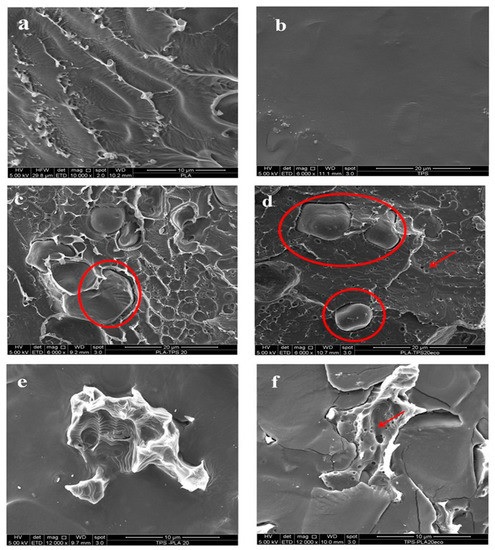Poly (Lactic Acid)/Thermoplastic Starch Films: Effect of Cardoon Seed Epoxidized Oil on Their Chemicophysical, Mechanical, and Barrier Properties Turco, R. ; Ortega-Toro, R.; Tesser, R.; Mallardo, S.; Collazo-Bigliardi, S.; Chiralt Boix, A.; Mario Malinconico; Rippa, M.;Di Serio, M.; Santagata, G. Coatings 2019, 9(9), 574 doi: 10.3390/coatings9090574
Abstract
In this work, biodegradable films based on poly (lactic acid) (PLA) and corn thermoplastic starch (TPS), additivated with epoxidized cardoon oil plasticizer (ECO) at 3% by weight with respect to PLA mass fraction, were prepared by melt extrusion process and compression molding. The effect of ECO on structural, thermal, mechanical, barrier, and spectral optical properties of the films was investigated. Spectroscopic analysis evidenced the development of physical interaction between oil and polymers, mainly PLA. In addition, no oil migration occurrence was detected after six months of film preparation, as evidenced by oil mass evaluation by precipitation as well as by 1H-NMR methods, thus highlighting the good inclusion of oil inside the polymeric network. The plasticizing action of the oil induced a lean improvement of the interfacial adhesion between hydrophobic PLA and hydrophilic TPS, particularly accentuated in PLA80_ECO composition, as evidenced by morphological analysis of blend fracture surfaces. TGA data underlined that, differently from TPS-based films, PLA-based systems followed one degradative thermal profile suggesting a slight compatibilization effect of epoxidized oil in these films. The shifting of Tg values, by differential scanning calorimetry (DSC) analysis, indicated a weak miscibility at molecular level. Generally, in the investigated blends, the phase separation between PLA and TPS polymers was responsible for the mechanical properties failing; in particular, the tensile strength evidenced a negative deviation from the rule of mixtures, particularly marked in TPS-based blends, where no physical entanglements occurred between the polymers since their immiscibility even in presence of ECO. The epoxidized oil strongly improved the barrier properties (water vapor permeability (WVP) and oxygen permeability (O2P)) of all the films, likely developing a physical barrier to water and oxygen diffusion and solubilization. With respect to neat PLA, PL80 and PL80_ECO films evidenced the improvement of surface wettability, due to the presence of polar groups both in TPS (hydroxyl residues) and in epoxidized oil (oxirane rings). Finally, following to the conditioning in climatic chamber at T = 25 °C and RH = 50%, PLA80 film became opaque due to TPS water absorption, causing a light transmittance decreasing, as evidenced by spectral optical analysis.

